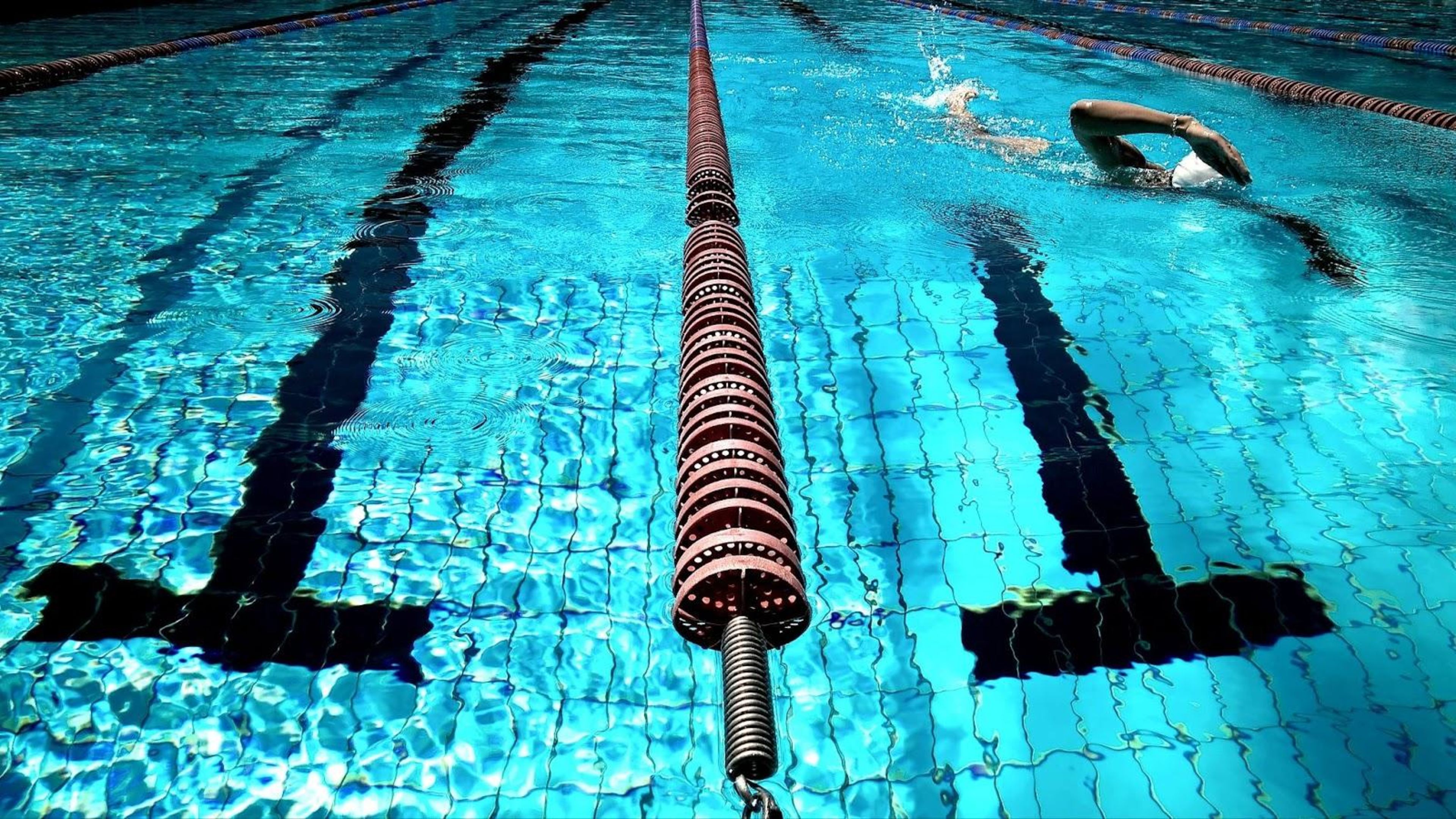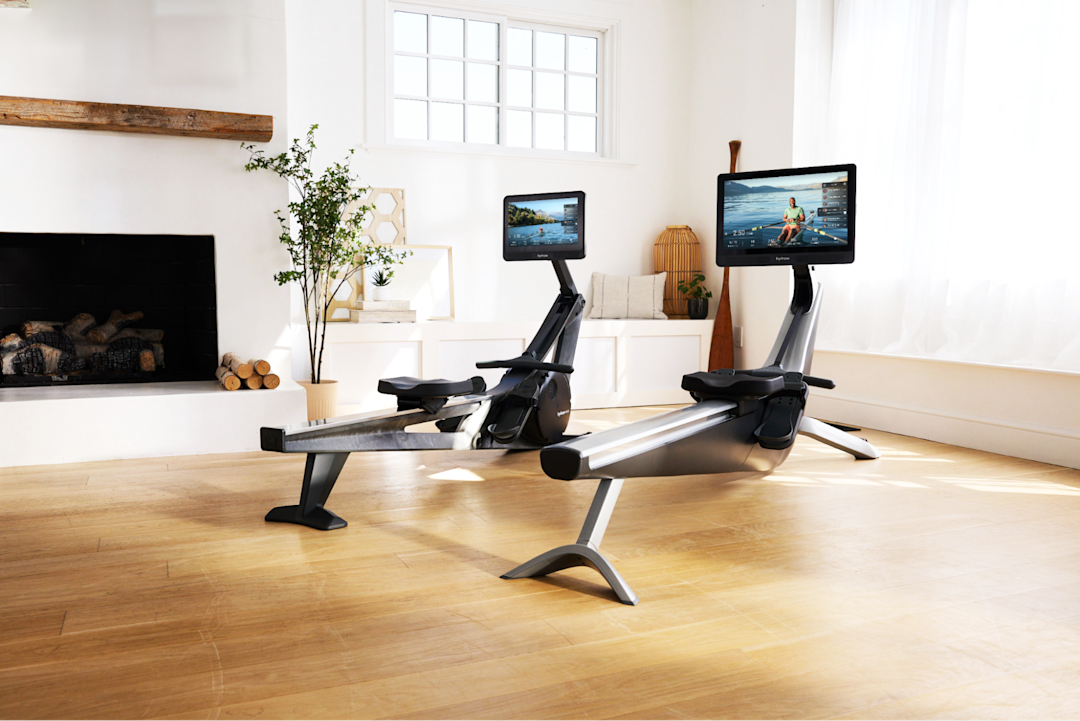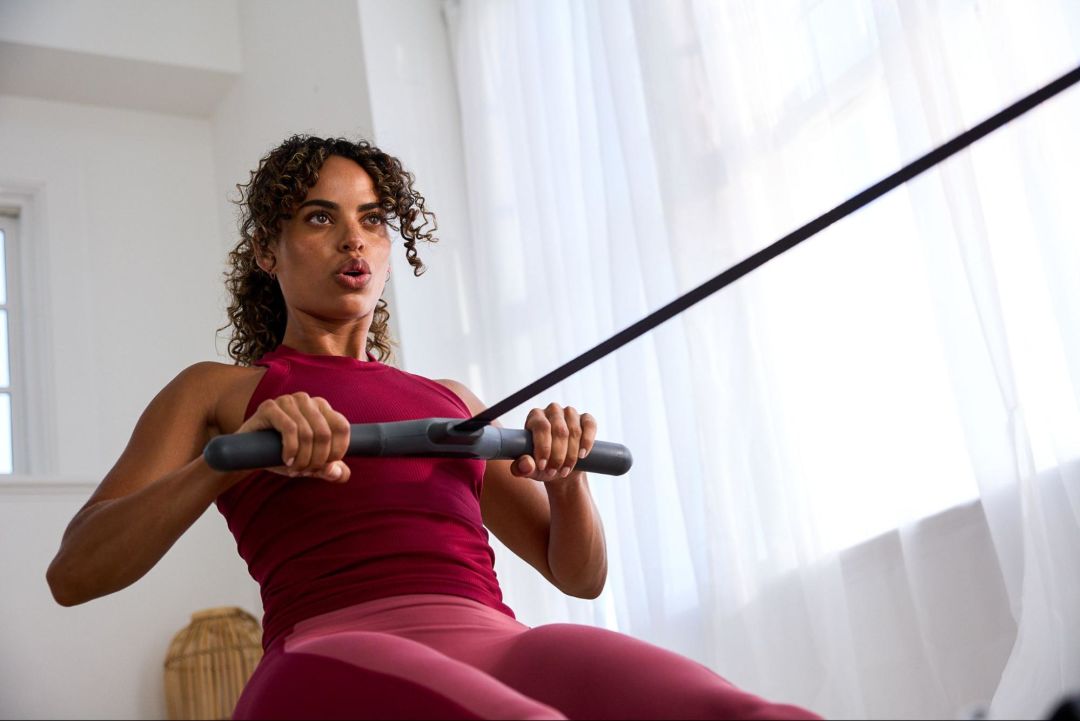Rowing vs. Swimming: Which Workout Is Better?

In the realm of fitness, two activities stand out as versatile and effective full-body workouts: rowing and swimming.
Both offer unique benefits that cater to different preferences and goals. While swimming has long been regarded as a go-to option for cardiovascular exercise, rowing has been gaining traction as a powerhouse workout that offers a multitude of advantages.
In this article, we’ll delve into the comparisons between rowing vs. swimming and discuss why investing in a rowing machine could be a game-changer for your fitness journey, including:
Let's get started!
Building muscle: Rowing means business
When it comes to building muscle, rowing takes a decisive lead over swimming. While swimming primarily engages muscles in the upper body, such as the shoulders, arms, and chest, rowing involves both the upper- and lower-body muscle groups.
The rowing motion not only targets the arms and shoulders, but also engages the core, back, legs, and glutes. This comprehensive engagement of muscle groups makes rowing a more effective option than swimming.
Calorie burn: Rowing takes the lead
Rowing and swimming are both excellent calorie-burning activities, but rowing takes the cake due to its efficiency. Rowing at a moderate intensity can burn up to 600 calories per hour for the average person, while swimming burns around 400 to 500 calories per hour. The dynamic and engaging nature of rowing ensures a higher calorie burn rate.
So, if you’re looking for a better bang for your buck in terms of the time you invest into your workout, rowing will burn more calories in less time when compared to swimming.
Related Read: Is Rowing a Good Workout?
Impact level on joints: A gentle touch with rowing
One of the primary concerns when choosing a workout is the impact it has on joints, especially if you have joint issues or injuries. While swimming is considered a low-impact activity, it can still exert some strain on the shoulders and rotator cuff if not executed with proper form. Rowing, on the other hand, is a low-impact exercise that puts minimal stress on joints, making it suitable for people of all ages and fitness levels.
Cardio: Rowing's heart-pounding benefits
Both rowing and swimming provide exceptional cardiovascular benefits, but rowing offers a unique advantage in this department. Because rowing engages a larger number of muscle groups simultaneously, this activity leads to an increased heart rate and more intense cardiovascular workout. The rhythmic motion of rowing also enhances blood circulation, promoting heart health and endurance.

Considering a Hydrow rowing machine? We tackle all your burning questions in our FAQ guide.
Fat burn: Rowing's efficient torchbearer
When comparing a rowing machine vs. swimming for burning fat, rowing emerges as a clear winner. The combination of muscle engagement, calorie expenditure, and cardiovascular enhancement during rowing leads to effective fat burning.
The full-body nature of the rowing motion ensures that calories are torched not only during the workout, but also in the post-exercise recovery phase, making rowing an efficient tool for shedding excess body fat.

Efficient and Effective
Work 86% of your muscles in just 20 minutes with a Hydrow rowing machine.
Efficiency: Rowing maximizes your workout time
For those with busy schedules, rowing offers a time-efficient workout option. The intensity and engagement of rowing allow you to achieve substantial results in a shorter amount of time compared to swimming. A 30-minute rowing session can provide a more effective workout than an hour of swimming, making it an excellent choice for individuals looking to make the most of their limited time.
Accessibility: Rowing brings convenience
While swimming is undoubtedly enjoyable, it comes with logistical challenges such as finding a suitable pool, adhering to pool hours, and dealing with crowded facilities. Rowing, on the other hand, offers unparalleled convenience. With a rowing machine at home, you have the freedom to work out whenever it suits your schedule. You eliminate the need for travel and membership fees, along with the hassle of coordinating with pool hours, giving rowing a clear edge in terms of accessibility.
Swimming vs. rowing: Why rowing takes the crown
In conclusion, while both rowing and swimming offer a range of fitness benefits, rowing emerges as the superior option for numerous reasons. Its ability to engage multiple muscle groups, deliver a higher calorie burn, and provide a low-impact yet effective cardiovascular workout sets it apart from swimming. Rowing's efficiency, fat-burning potential, and unmatched accessibility make it a top choice for individuals seeking a transformative fitness routine.
Investing in a rowing machine is a wise decision that pays off not only in terms of physical gains but also in the convenience and flexibility it offers. As you embark on your fitness journey, consider incorporating rowing into your regimen to experience the comprehensive and lasting benefits that this exceptional workout provides. Whether you're aiming to build muscle, burn fat, improve your cardiovascular health, or simply lead a more active lifestyle, rowing has the power to propel you toward your goals with unparalleled efficiency and efficacy.
If you’re looking to invest in a rowing machine for your home, be sure to check out Hydrow's indoor rowers. The world's leading connected fitness rowing machine brings you to dozens of bodies of water, with real Athletes leading your workout around the world. Say goodbye to the limitations of pool schedules and embrace the freedom and empowerment that rowing brings to your fitness routine.

Explore Hydrow
Learn more about how you can transform your fitness routine with a rowing machine.





